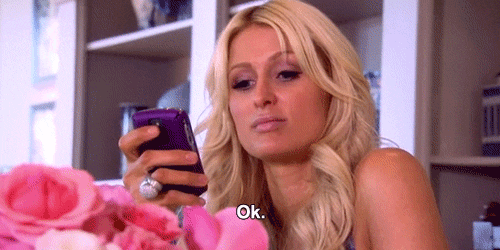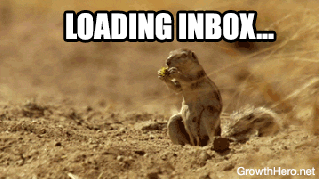An email has the power to change your day with a single notification – for better or worse. It might be an acceptance email from your dream university or it might be a client barking at you to make the poster you just designed pop more. For many of us, emails can be a catalyst for anxiety and stress. It isn’t just about receiving them it’s about that response too i.e. email sending anxiety!
While email anxiety builds, your productivity tends to dwindle. Yet, emails remain the main source of communication in the workplace. People go looking for productivity tips to help fight procrastination, but they tend to look over the biggest stressor — emails.
What does ’email anxiety’ mean?
In simple terms, email anxiety is that feeling of dread or fear that you have when you know you’re going to have to open up your inbox and stare at rows of unopened emails. Thinking of an accurate response that answers each question, making sure it’s all grammatically correct — and then waiting for a reply. It can be a frustrating process, especially for those of us who can’t turn off the email etiquette guidelines in our heads.
There’s a fair amount of people who aren’t affected by email anxiety and may think of this as an overreaction. To them, you say, “Good day, sir. I said, GOOD DAY.”
Now, on to more important things…
So, how do you go about preventing email anxiety?
Well, for starters, here are some things you shouldn’t do when you receive an email:
- Delete emails as soon as they arrive without reading them.
- Use an ‘out of office’ auto-reply when in fact, you are in the office.
- Forward your emails to someone else in your office to deal with and write ‘what do they mean?’ after the subject line.
- Yell at your computer or throw it out the window.
- Play CubeField
The source of email anxiety depends on the individual. Some people find that the delay between emails is the main cause of their anxiety. Others feel that their email only brings bad news. And more find that replying to extraneous emails is time-consuming and unproductive. The podcast Reply All even created a holiday, Email Debt Forgiveness Day, in an effort to alleviate inbox stress!

Lengthy emails certainly have their place in an inbox, in the right situation. It’s hard to decipher whether the 15 emails in your inbox are all lengthy novels or if they contain a single sentence about needing more printer ink. It’s moments like these that highlight the importance of having your emails filtered before they make it to your inbox.
Even though deep down we would love to reply with, “TLDR, call me,” we feel obliged to reciprocate with another lengthy email to show your appreciation for the time they spent writing a lengthy email. A long email looks important and the recipient feels more obliged to reply with an email of equal length (even if the conversation could have been summarised in 4 dot points or a quick phone call).

As emails pile up in your inbox it becomes more and more challenging to reply to them all. Some email programs allow you to set up email priority so you can flag which are important. However, this can backfire quickly, especially if you’ve got multiple tasks which are essential in their own way. Therefore, we put together a quick list of productivity tips that hopefully prevents a Monday-morning-computer-throwing-fit.
8 productivity tips to reduce email anxiety:
Combatting email anxiety is easier done when you take the time to sit down and build yourself a system that deals with this directly. Each person’s system may be different but here are a few tips to get you started:
1. Communicate with your internal staff about what should be in emails and what shouldn’t.
Luckily for us at Hassl, we have an in-built chat that massively cut down on internal emails. If your workplace refuses to use an alternate channel for internal communication, create a guideline for what is an appropriate work email and what isn’t. For example, a daily update on meetings for the day is useful. A daily email wishing everyone a good morning…is an email chain disaster in the making. Don’t be that person. Also, if you’ve hit a certain level of frustration…here’s how to ask someone to stop sending you emails.
2. Arrange a clear communication process with your clients (daily, weekly, monthly etc).
If you have clients who only respond to one part of an email instead of the whole thing…well, it happens to the best of us. It’s why you need to arrange for a method of communication that works best for both of you. Avoid the stress and anxiety of sending another email to follow up on answers. Set up a call and make it a habit to get all your questions answered in 15 minutes or less.
3. Clean your inbox! And keep it clean.
If you’ve made it this far into achieving clean status, your task management skills are on another level. Good job! But here’s the tricky bit — you’ve got to maintain that. Allot a quick 10 minutes in a day to quickly scan your emails, marking the important ones to respond to as you go.
4. Unsubscribe from emails that you don’t want anymore.
Gmail genuinely offers you an option to unsubscribe to emails automatically. If the website is still finding ways to email you even after unsubscribing several times — hit that spam button like you mean it.
5. Allocate your tasks and amount of time you can spend replying to emails.
Managing email every day can get exhausting but hey, it gets easier when you tackle the beast head-on. Fix a specific time at work reserved solely for emails and make sure you stay on top of it. It’ll help you check your email at a steady pace without feeling like it overwhelms you. Additionally, you can let your email list know when to expect your response if you choose to keep a standard time to respond to emails.
6. Make a list of FAQ’s (emails that you regularly receive) and create templates.
If you notice you’re typing out the same emails frequently…you might want to look into creating a template for yourself. Leave it in your drafts and simply copy-paste it into the next email you need to send out. Don’t forget to change minor details before you hit that send button though! (P.S. if you haven’t adjusted your Gmail settings yet, there’s an Unsend option!)
7. Pick up the phone. Long responses and conversations via email will likely take a few minutes over the phone.
There’s a running joke that millennials avoid calls like the plague. Well, the real trick here is to simply give them a heads-up. If you’re going to call, let them know ahead of time to avoid getting blanked. If you’re the guilty millennial in question, just set up times for a call instead, and we promise it is so much quicker and easier to get things done. Emails can be used simply for having things down in writing — and that’s it.
8. Make a list of emails that shouldn’t be emails and implement it into your communication strategy.
Personal emails, junk mail, social media related emails…if it’s not about work, it shouldn’t be in your inbox. Easier said than done, especially if you’re not communicating this to your staff or clients. Keep emails clean by setting down some firm rules (and email filters!)
Cleaning up your inbox and creating processes around communication will help reduce your email anxiety. Better yet, take charge of the communication channels at work and improve them! Find one that works better than emails, we promise, there’s a whole world out there. Taking control of your inbox can be made easy — it’s time to make emails your friend again!



